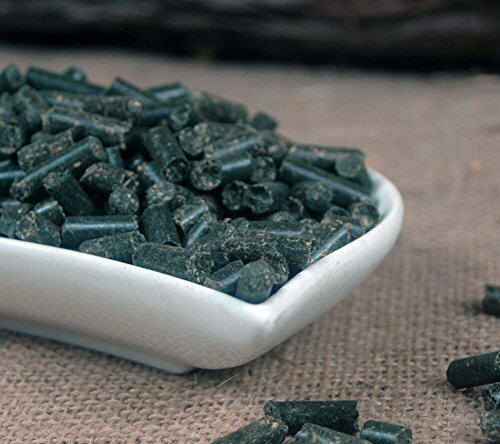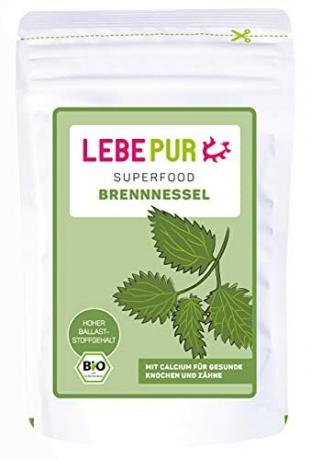Nettle manure strengthens the plants in a natural way. We show advantages, application of the popular liquid manure and how to use it correctly.

Every hobby gardener has probably heard of a plant slurry. It is said to be a panacea against plant pests and also a good biological fertilizer. A particularly popular manure is the well-known nettle manure. Some experts also swear by the effect of liquid manure, although this has not yet been scientifically proven. It doesn't matter whether it's proven or not, we'll show you the possibilities and strengths of nettle manure.
contents
- Advantages and mode of action of nettle manure
- The following products have proven themselves in our garden:
- Preparation: prepare nettle liquid manure
Advantages and mode of action of nettle manure
Like all plant manure, nettle manure is produced by a fermentation process. Microorganisms ensure that nutrients such as nitrogen from the leaves and stems of the nettle (
Urtica) be released. The nutrients are immediately available for the plant, as with a mineral fertilizer. The fertilizing effect of liquid manure occurs immediately and that is also the reason why it is so popular to use it as a biological fertiliser. In addition, all sorts of other plant-based ingredients are released during fermentation, such as enzymes. A particularly interesting ingredient in stinging nettle is silica. This component of the nettle ensures strong cell walls and thus better protection against insect infestation and fungal diseases. Due to the wide variety of ingredients that are released by the manure, there are many areas of application.Nettle manure is normally only used diluted as it can burn the plants. This is probably due to the high ammonium content (a form of nitrogen). However, undiluted nettle manure can be applied as basic fertilizer to a bed that has not yet been planted. The liquid manure should be easily worked in there and after about a week the bed can be planted without hesitation. However, such fertilization is not enough for heavy consumers: additional fertilization with compost is recommended here.

In general, nettle manure is very suitable as a fertilizer for vegetables (cucumbers, cabbage, tomatoes, zucchini), but not for beans, peas and onions and for fruit and flowers. If the plants are already on the bed, they should only be watered with a 1:10-20 dilution, but regularly. Incidentally, liquid manure is more suitable for pouring treatment. Syringes clog quickly when using liquid manure. Should the nettle against pests like aphids and spider mites help or against fungal diseases, then we recommend using a broth. We will go into the difference in more detail in the next section in the production. The broth is intended to keep plant pests away from the plants on the one hand and to strengthen the plant cells on the other. Again, regular use is crucial. However, we strongly doubt an effect against ants, snails and voles. It is best to spread the broth and liquid manure in the evening. Under no circumstances should the nettle liquid manure be applied in full sun.
The following products have proven themselves in our garden:
- nettle powder: for the preparation of nettle broths
- nettle pellets: herbal preparation for making nettle broth; approved for organic farming
- 6%

Neudorff nettle pellets 500 gr
11,49€10,80€
Details →

Naturix24 - nettle pellets - 250 g
7,50€
Details →

Lebepur nettle powder (organic) 125g
6,99€
Details →
Preparation: prepare nettle liquid manure
The preparation of a nettle liquid manure is actually relatively easy. All you need is a jar made of plastic or earthenware (no metal). The barrel is placed in the sun if possible, as the heat accelerates the fermentation process. The freshest and non-blooming stinging donkeys are placed in the barrel. Alternatively, you can also use dried nettle, which is available in pellet form, among other things.
Mixing ratio: 10 kg fresh nettles or 500 - 1000g dried nettles to 50 liters of water.
The barrel should then be covered with a grid or something similar so that no animals can drown in the barrel. Now you have to be patient, because the fermentation can last 10 to 14 days. On countless pages the tip is given that it must be stirred daily for a better oxygen supply. However, fermentation is a process in which no oxygen is used. So forget this step! Rock flour, which also enhances the manure with its ingredients, helps against unpleasant odors.
nettle broth: Here, the stinging nettles can only steep for 12 to 24 hours and must be consumed on the same day. To do this, first strain the broth through a coffee filter and then spray undiluted onto the plants.
In contrast to the odorless nettle broth, nettle manure can be stored. For example, it can be filled into canisters. Unfortunately, an exact storage time cannot be given at this point, as this naturally also depends on the storage conditions. However, because nettle manure should be spread regularly, the supply is likely to run out quickly.
